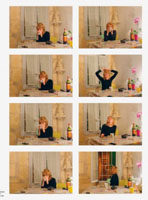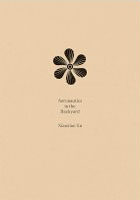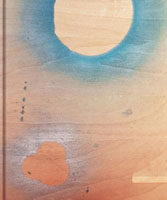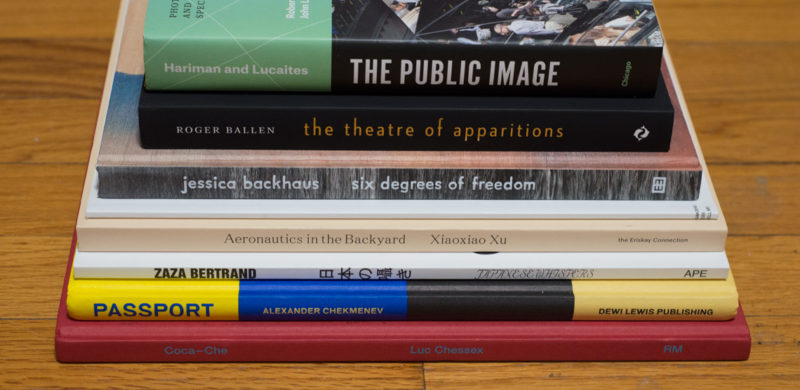There still is quite the pile of photobooks waiting to get reviewed in my office. Given I’m starting into 2017 with a little trip to re-charge my batteries I’m going to use the opportunity to review as many as I can. I’ll be back in mid-January. So here goes…

The first book isn’t a photobook. Instead, it’s a book about photography. Robert Hariman and John Louis Lucaites are the masterminds behind the No Caption Needed blog. Their new book, The Public Image: Photography and Civic Spectatorship, is a vastly expanded continuation of the blog, a book that, I believe, deserves to be read very widely in the world of photography. While focusing mostly on the world of news photographs and how those affect (or don’t affect) public discourse, vast parts of the book apply to the general world of photography.
In particular chapters 2 and 3, For Interpretation and Realism and Imagination, offer a passionate and at times blistering criticism of some of photography’s most cherished — and, as these authors make very clear, overrated — theories, in particular Susan Sontag’s. How or why her On Photography came to be seen as so revelatory has always escaped me. Hariman and Lucaites make a very strong case for ditching what often is little more than ill-informed fortune-cookie “wisdom,” however well it is being delivered (that’s my way of describing On Photography, not theirs).
The authors then apply their reasoning to a large number of news photographs. While those kinds of photographs often are problematic, doing so still offers many lessons. To begin with, aside form advertizing photography, images in the news are the most widely seen types of photographs, and here I mean collectively most widely seen. What lessons are to be learned from what we’re seeing is not clear. As 2016 has shown, despite a history of photography that is now approaching its 200th year, as viewers we are still woefully unprepared to make sense of images and to then apply the lessons to our lives, cultures, societies.
Hariman and Lucaites provide us with many invaluable ways of thinking about photography that go beyond the often narrowly ritualistic ways we use when encountering images. We ought to take note. Or we might as well continue on the path that has served us so poorly so far, continuing our march into what right now looks like a very bleak future.
The Public Image: Photography and Civic Spectatorship; written by Robert Hariman and John Louis Lucaites; 352 pages; The University of Chicago Press; 2016

How to review a book like Alexander Checkmenev‘s Passport? Maybe by stating the obvious right away. First, the book is filled with a lot of pretty amazing pictures. Second, many of those pictures make for very uncomfortable viewing. Third, The preceding is likely to trigger a discussion around the ethics of either taking the pictures in the first place or publishing them.
I’m fully sympathetic to these kinds of concerns regarding the ethics of photography. But I also feel that something is amiss in photoland. While part of it behaves as if any of the discussions around, say, the male gaze or the ethics of photographing have never happened, another part is only too eager to essentially squash almost every even remotely uncomfortable discussion with vastly overblown outrage, usually using the tools of social media.
My feeling is that both approaches to what the medium can do are ultimately reactionary and counterproductive. Pretending that the history of photography is a blank slate and you can basically do whatever you want as long as you just express the presumably right intentions obviously isn’t going to solve any of the problems at hand. At the same time, drowning out possible discussions out of a sense of self-righteous outrage isn’t going to advance anything, either.
To bring this back to Passport, what are we actually looking at here? In the early 1990s, after Ukraine became an independent country, the country required its citizens to get rid off their Soviet passports and to replace those with Ukrainian ones. Those who were too sick, fragile, old, or any combination of these were visited by social services and a photographer so that new passport pictures could be taken. Chekmenev was one of those photographers.
Someone would hold up a white backdrop (while someone else might prop up an invalid subject), and Chekmenev photographed the sitter. But the photographer didn’t just focus on the subject’s face. Instead, he photographed the larger scene at hand, the conditions in which these elderly now Ukrainians were living in. In some, but not all, cases, these photographs make for uncomfortable viewing, given the state of outright squalor and/or distress of the sitters.
You could now either pretend as if there was no problem whatsoever with these pictures, or you could engage in the usual exploitation “discussions.” Neither would lead anywhere really. Instead, I think the most appropriate response would be to do both at the same time, in other words to accept the pictures as exposing the reality they depict while to feel a sense of outrage over what is on view. After all, photographs are merely cultural artifacts that we too often overload with unrealistic expectations (see, for example, how images coming out of Syria right now are being discussed). If we want to break out of running in circles, this would seem to be the best approach.
It is exactly that conflict that is at display in this particular book, and it is amplified even further by the fact that many of the photographs are simply amazing, however painful they might be to look at. This is photography depicting the human condition. If we don’t like what we’re seeing, the best approach to doing so is not to have a discussion about photography. Instead, we need to talk about the larger issues first.
Passport; photographs by Alexander Chekmenev; 156 pages; Dewi Lewis; 2017
Rating: Photography 4.0, Book Concept 4.0, Edit 3.0, Production 4.0 – Overall 3.9

I thought if there was one thing I didn’t need it was another book with photographs taken in Cuba. You know, the usual fare of pictures of old cars, plus run-down, yet very colourful interiors. I’m under no illusion that the production of such cliche imagery will stop any time soon, though. Regardless, whatever you can say about Luc Chessex’s Coca-Che, a collection of the usual cliche imagery it is not.
Instead, the book presents photographs that each show either a portrait (or rendition thereof) of Che Guevara in some larger context or an advert for Coca Cola (or both). That’s it. Photographed between 1960 and 1975, these b/w photographs of the Communist icon and its ur-capitalist equivalent point at a larger truth behind the differences in ideology: without proper branding, neither a communist revolution nor a sugary syrup are worth much, if anything.
In both cases, the intended messages are made to clash with the actual reality of life. A man missing a leg hobbling by a happy Coca Cola advert. Children living in poverty next to a Che Guevara mural. Combining these photographs really makes you question the supposed differences behind these ideologies.
Coca-Che is produced to look like a book from an older era, with a printing that resembles gravure, two different types of paper (one somewhat coarse and brown), and photographs all oriented the same way, regardless of whether they’re landscape or portrait format.
All of this combined makes for a very carefully considered and engaging book, where all the bells and whistles are just right, without overwhelming the photographs in question.
Coca-Che; photographs and text by Luc Chessex; 96 pages; RM; 2017
Rating: Photography 3.5, Book Concept 3.5, Edit 3.0, Production 4.0 – Overall 3.6

Japanese love hotels are another one of those overphotographed topics, aren’t they? But just because it’s overphotographed doesn’t mean it can’t get covered — assuming there’s an interest in a new angle. This is what Zaza Bertrand went after. If you’re looking to see funky looking interiors with lots of garish colours, possibly including women dressed in all kinds of exotic ways — in other words the usual cliches, Japanese Whispers is likely to disappoint you.
Instead, the book is a somber and somewhat disheartening affair, presenting the world of rented sex as one of loneliness and outright desperation — a business filled with mostly sad looking people. Instead of exotically othering the Japanese women and men in the pictures, they are simply depicted as the human being they are. This means they are also not shown in the often condescending ways photographers tend to use to cover sex for sale when photographing in the West.
It would seem to me that even though we have seen our fair share of images of prostitution, of sex for sale, the human dimension of it all-too often has been delegated to the back, to instead have us ogle over freaks who sell their bodies, or over grimy demiworlds inhabited by people who might drink too much, or over supposedly brave people “simply” going about a business like any other. For me, none of these approaches has much appeal: there’s just too much cliche going on in all of these.
Instead, we need to be presented with the human condition, unadorned with any of the ballast sex inevitably comes with. That’s hard to do. Zaza Bertrand pulls it off well here.
Japanese Whispers; photographs by Zaza Bertrand; 96 pages; Art Paper Editions; 2016
Rating: Photography 3.5, Book Concept 3.5, Edit 3.0, Production 3.0 – Overall 3.3

Tu Me Dis by Titus Simoens shouldn’t really work as a photobook, but it does. It doesn’t really have a cover. Rather on the cover, the book already unfolds in the form of a grid of photographs, all of which are more or less a variant of the same picture. This strategy continues inside, with grids and grids of pictures. The essay is reproduced on the back. The book’s title and photographer are printed in miniscule letters around the spine, near the bottom of the book.
In a nutshell, Tu Me Dis is a great example of how to break all rules of photobook making and still succeed (don’t try this at home), proving that rules exist for a reason — they can be broken, provided it makes sense. The book follows what I’m tempted to think of as a series of photobooks that I file under The New Male Gaze. Obviously, the male gaze has a long history, and there is plenty of literature discussing it.
Lately, a new generation of younger photographers who seem very much aware of the medium’s history (unlike those who simply go about business as usual, as if feminism had never happened) have taken the model of books such as Rene Groebli‘s Das Auge der Liebe to continue work in this vein. For example, Thomas Boivin‘s A Short Story comes to mind (which I reviewed here). Tu Me Dis fits right in.
The book contains 2016 photographs of a young woman whom the photographer is compelled to photograph. Roughly half of the photographs were taken in an apartment at night, with the subject sitting at a table, in front of a window. The other half have her photographed against the sea, right before the final light of a day is gone. The viewer is made to look at the young woman just like the photographer does. The repetition enforces a sense of urgency to look, of wanting to look at her. Near the end, we see the young woman, mostly from the back, with her top taken off.
It’s all very male gaze, but it’s a kind of male gaze that knows that merely repeating the past’s simple patterns might not suffice, while not photographing also wouldn’t be right. So just like before, there we are again, stuck in this strange position where opting for just one of the two possibilities would leave us with less than trying to have it both ways. And this works for me.
Tu Me Dis; photographs and text by Titus Simoens; 24 pages; Art Paper Editions; 2016
Rating: Photography 3.0, Book Concept 4.0, Edit 5.0, Production 3.0 – Overall 3.6

The closest you can get these days to entering one of the innermost circles of hell is to engage in air travel. It’s an infantilizing, thoroughly unpleasant affair, where in the name of “security” you allow yourself to be treated like shit — unless, of course, you are able to fork over a lot of money for a space in “business class” or beyond (this all is just a mirror of our societies at large, though). I personally would happily forgo air travel if I could. But that’s not an option.
It’s not an option because I enjoy traveling (or rather the experience of being somewhere else) as much as I enjoy being on a plane. Whenever possible, I will book window seats, and I yet have to get tired of seeing the planet from above, of flying through the clouds, of seeing places approach or disappear in the distance. Unlike many people, I’m not afraid of flying — in between those exhilarating moments of joy I’m usually just bored to death.
There’s something endearing about the characters in Xiaoxiao Xu‘s Aeronautics in the Backyard. They all decided to build their own helicopters or planes from whatever materials they deemed necessary or had available. They’re Don Quixote characters if you imagine the Spanish wannabe knight had actually existed in the age of chivalry, with actual knights being around. One man, Cao Zhengshu, is working on building a helicopter, run with an old car engine, whose desired flight altitude is 1 m (3 ft). So far, he has not achieved his goal. To me, that’s an amazing goal, much more impressive than, let’s say, Wang Qiang’s (3500 m). I admit I have a soft spot for the world’s Don Quixotes.
Most of men appear to have taken their various contraptions off the ground. Some have crashed, with some of those having injured themselves quite severely. But they’ve all been working on their dream, of building a plane or helicopter and seeing the world from above. Organized in chapters, Aeronautics in the Backyard presents them and their machines. To this end, the book relies on a lot of text to get its story across. It might as well, given it’s a book in the tradition of contemporary documentary photography. The result is entertaining and charming, a well-rounded book made just the right way.
Aeronautics in the Backyard; photographs and text by Xiaoxiao Xu; text by Gover Meit; 160 pages; The Eriskay Connection; 2016
Rating: Photography 3.0, Book Concept 4.0, Edit 3.0, Production 3.5 – Overall 3.4

Over the course of his career, Roger Ballen has steadily moved further and further away from the initial straight photography he first got known for. To an increasing extent, elements of staging have made their way into his work, with surrealism now more made than found. I personally don’t find one better than the other. I do enjoy the early photographs as much as his later work. This is probably because in that debate over whether or not the world is able to present a photographer with thing s/he could hardly think of, I’m in the camp of what essentially is the history of art: human imagination has brought us thousands of years of art — why should any of that not be valid only because you’re taking pictures with a machine?
Ballen’s latest work, The Theatre of Apparitions, falls flat for me, though. Adopting an idea he had seen in a prison, the images presented therein were created by Ballen and his assistant on glass, using paints and a variety of tools, in what essentially could be considered quite similar to woodblock printing: material being removed results in light areas. The images in the book are photographs of these glass panes.
This is not to say that there aren’t quite a few arresting and visually very interesting images in the book, quite on the contrary. But there are also many images that simply fall way short of what the good ones achieve, and the sorting into different categories (called “Acts,” such as “burlesque” or “eros”) plus the somewhat clumsy titling further undermines the power of the good imagery. As a much condensed book, with only the strong images and no further text, this could have been quite amazing. As is, though, the book comes across as deliberately heavy handed.
The Theatre of Apparitions; photographs and text by Roger Ballen; text by Colin Rhodes; 192 pages; Thames & Hudson; 2016
Rating: Photography 1.5, Book Concept 2.0, Edit 2.0, Production 3.5 – Overall 2.2

Jessica Backhaus is no stranger to making books, having produced six of them over the course of the past decade. That’s a lot. As a photographer, Backhaus could maybe be described as someone making inconsequential observations. I don’t mean the use of this term in any kind of negative sense: it’s simply a photographer paying attention to details that most of us wouldn’t bother looking at twice, infusing the resulting pictures with a sense of magic (another artist working in this vein would be Rinko Kawauchi).
Much like all other types of photography, this one has its pitfalls, namely the severe risk of the end result might be a bit twee, as, I think, some of this artist’s books are. Not this one, though, a book entitled Six Degrees of Freedom. I suppose what pulled Backhaus out of tweeness here was the sense of gravity that probably is unavoidable when dealing with one’s biography.
I had a feeling that something like this was going on leafing through the book, while ignoring the texts. While there are images that skirt dangerously close to being either twee or merely formal exercises in the book, all in all a sense of longing is communicated, a sense of wanting to come to terms with one’s past. Refusing to fully reveal itself at first, the feeling gets stronger and stronger, the more often one looks through the book; and there might be simply no resolution, either for the viewer or the artist.
Six Degrees of Freedom; photographs and text by Jessica Backhaus; texts by Caroline von Courten, Lars Mextorf; 112 pages; Kehrer; 2015
Rating: Photography 3.0, Book Concept 3.5, Edit 3.0, Production 3.5 – Overall 3.3
Ratings explained here.
